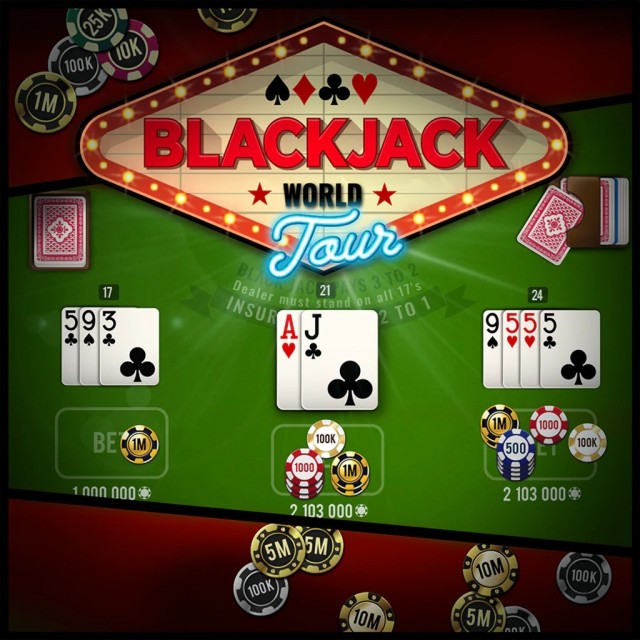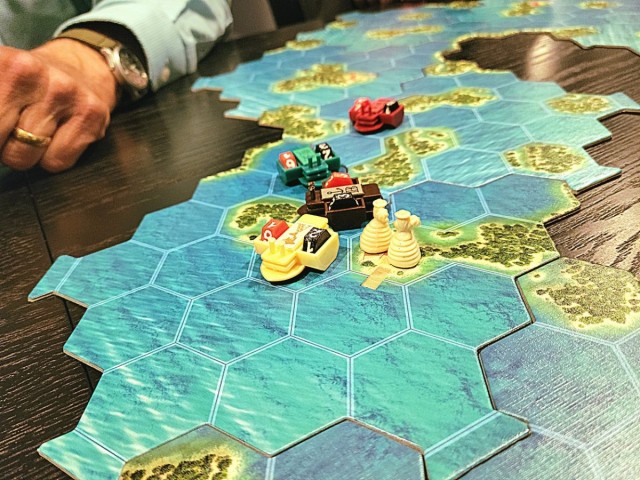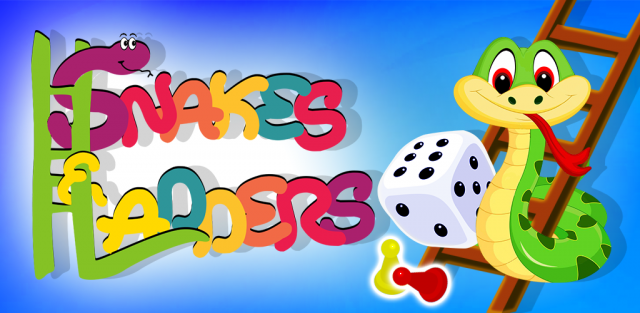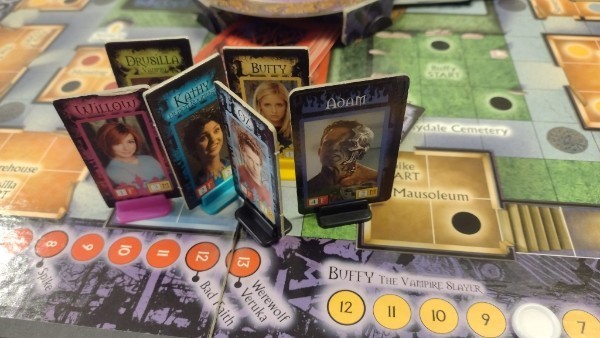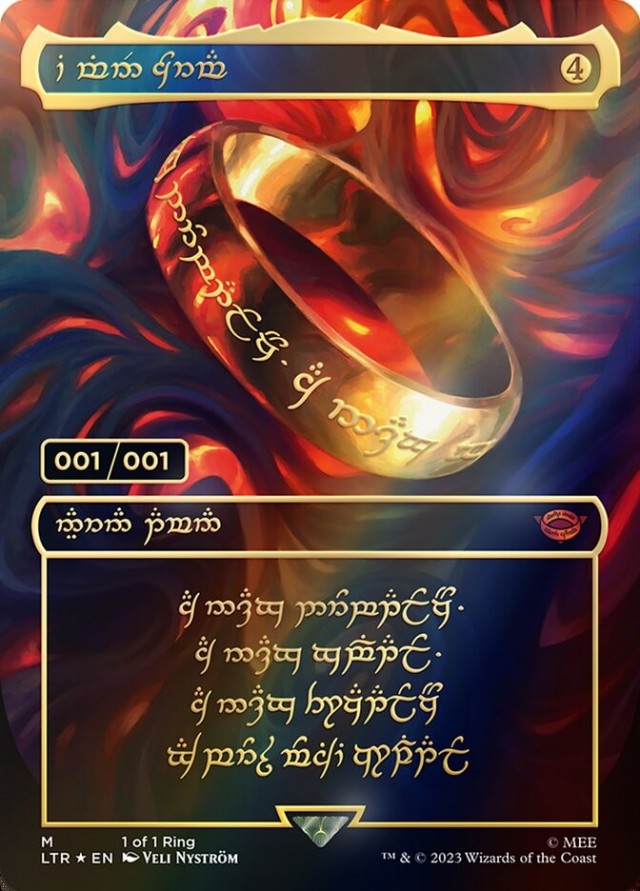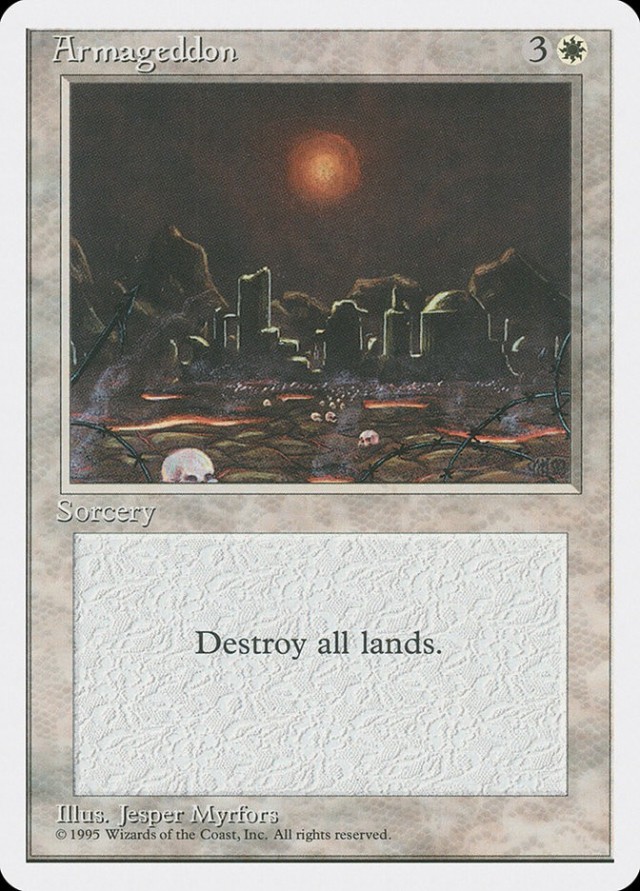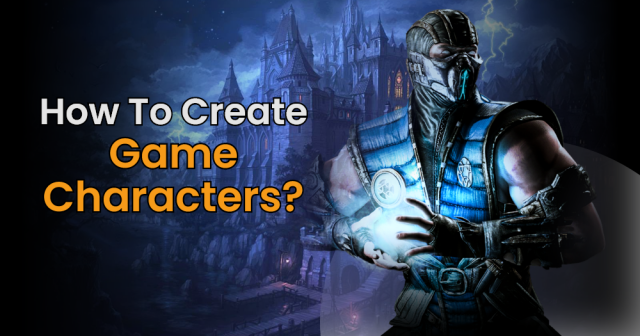[Previous chapters in this series: 1, 2, 3, 4]
When last we left Rockwell Jones, ex-pugilist private eye, he was on the trail of a missing person, and had followed a lead from an opium den into the dark recesses of a Warehouse on Chicago's waterfront. His attempt to sneak inside failed, and he found himself surrounded by the Midnight Army.


The Midnight Army's "reveal column" -- the chain of icons running down the left edge of its card -- is resolved as soon as the card is revealed. The Army has a Military theme (red shield), which doesn't match any other cards in the current Adventure (see chapter 4), so the Arch Villain gains no theme tokens. The last entry in the reveal column is the card's Menace cost, in this case -3 Menace (skull icon). Rockwell immediately loses 3 Menace, reducing his Menace level to zero. A given Hero's Menace level ranges from 0 to 10, and may never drop below zero or rise above 10. Menace is spent by the Arch Villain to activate special powers and to buy bonus dice for tactic rolls, so Rockwell's Menace level of zero minimizes the threat of the Midnight Army. The Menace cost of revealing enemies serves as a balancing mechanic, mitigating the threat of more powerful foes, especially in the early game. Rockwell has no allies, and has encountered the Midnight Army -- one of the most powerful City Minions -- on the first turn of the game, but until he gains Menace, the Midnight Army will not be able to use its "Rifles" ability or buy bonus dice.
Which brings us to one of TToA's core gameplay elements: fighting. Each fight round costs 1 action to resolve, and Rockwell has 1 action remaining, so he will fight 1 round before play passes to the next player.
Each character (Hero, Ally, Minion, or Villain) in the game is rated in three primary stats (Might, Speed, and Wit), and three secondary stats (Engage, Health, and Defeat). Might, Speed and Wit are the values used for test and tactic rolls, with a normal human range of 1 to 3.
Engage represents the minimum number of engagements a character must resolve on a given fight round. Each time any two opposing characters engage, they each use up 1 engagement, and a given fight round ends when all available engagements have been used up. This means that, in a fight involving just two opposing characters, each with an Engage rating of 1, a fight round would end after a single engagement between those two characters. However, Group characters usually have a number of engagements based on their remaining Health. Here, you can see that the Army's Engage rating is 1/1 Health, which means the Army must resolve 1 engagement per point of Health it has remaining. So, because the Army has Health 4, Rockwell will have to fight 4 engagements before the fight round ends. This mechanic is meant to reflect the feeling of being mobbed or swarmed by a large group of enemies.
Health represents a character's durability. A given character can suffer two types of damage: wounds and fatigue (represented by red and yellow "droplet" icons/counters, respectively). A given character is defeated as soon as the number of wound counters it carries equals or exceeds its maximum Health rating, or as soon as the number of fatigue counters it carries exceeds its maximum Health rating. The difference between wounds and fatigue may seems meaningless until you figure in the fact that it is much easier to recover fatigue than it is to heal wounds. For instance, a rest action heals 1 wound on each party member (2 wounds if resting in a city), but removes all fatigue from each party member; and any time a Hero spends an action to move via train, ship, or aeroplane, all fatigue is removed from each party member (because someone else is doing the driving).
Defeat is the Moxie or Menace adjustment that is applied to the active Hero upon the character's defeat. In this case, Rockwell will gain 3 Moxie if and when he defeats the Midnight Army. You can think of a given character's Defeat value as its experience point value, with the added twist that the defeat of an Ally actually penalizes the owning Hero by inflicting a loss of Moxie.
So, Rockwell begins his first fight round against the Midnight Army. At the start of each fight round, the active Hero player always has the option to attempt to escape from the fight. This costs 1 Moxie, and requires the Hero player to win a Speed test against the Speed of the enemy. If you successfully escape, you can just ignore the enemy and continue with your Adventure; if you fail, you have to resolve the fight round, less the 1 Moxie you spent on the attempt. Since this is Rockwell's first foe, and he's unscathed and fully rested, he decides to fight this first round.


Each player has three six-sided tactic dice, each of which is color-coded to match one of the three primary stats: a red die for Might, a yellow die for Speed, and a blue die for Wit. In addition, each player has two "bonus dice" (white for the Hero players, black for the Arch Villain player), which may be added to any tactic roll for a cost of 1 Moxie/Menace per die if a Hero or Villain is making the roll, or 2 Moxie/Menace per die if an Ally or Minion is making the roll.

For each engagement, the two opposing players each take all five of their dice under the table to choose tactics secretly. Each player selects one colored die to indicate which tactic he is using for that engagement (Might, Speed, or Wit), and then 0, 1, or 2 bonus dice to add to that roll. Both players reveal their choices simultaneously, pay for any bonus dice they reveal, and roll their dice. Just as with test rolls (see chapter 2), a player may only use the result on one of his dice to add to the roll (i.e., the numbers rolled on bonus dice are not all added to a roll total, but provide more chances to roll a high number).
Each player calculates his tactic roll total by adding his highest die roll to the stat indicated by the colored die he rolled, then adding 2 to the total if he chose a tactic that is strong against his opponent's chosen tactic. In classic rock/scissors/paper form, each of the 3 primary stats is strong against 1 opposing stat: Might gets +2 against Wit, Speed gets +2 against Might, and Wit gets +2 against Speed.

And, as you can see, each tactic has one basic result for the winner: if you win with Might, you inflict 1 wound on your foe; if you win with Speed, you inflict 1 fatigue; and if you win with Wit, you gain 2 Moxie and lose 2 Menace (this last is reversed on the Arch Villain's tactic results table, so the opposing Hero loses 2 Moxie and gains 2 Menace when the Arch Villain player wins with Wit). Of course, various character abilities and card effects can alter these results, which is where a lot of flavor can enter a fight. For instance, Rockwell's .45 Automatic allows him to alter the outcome of an engagement if he wins it with Speed:

The Midnight Army's "Rifles" ability allows for a similar result substitution, which may be applied if the Midnight Army wins with Wit, but the Army needs Menace to use the ability and Rockwell currently has 0 Menace. Generally, heavy weapons like tommy guns depend on Might, handguns depend on Speed, and long-range and area-effect weapons like rifles or dynamite depend on Wit.
Got all that? To the fray!
ROUND 1
First engagement: Both players choose tactic dice secretly. Rockwell chooses Might, with no added bonus dice (he reveals his 1 red die). The Arch Villain player chooses Speed, with no added bonus dice (he reveals his 1 yellow die). Rockwell rolls a 5, + Might 3 = 8. The Midnight Army rolls a 2, + Speed 2, +2 for the Speed vs. Might modifier = 6. The soldiers try to maneuver for position among the stacks of crates, and Rockwell steps out of cover to clock one. The Army suffers 1 wound, reducing its Health to 3.
Second engagement: Rockwell guesses the Army will try Might, since Speed didn't work out, and chooses Speed in hopes of countering. He reveals his 1 yellow die, and the Arch Villain player reveals his 1 red die, indicating that Rockwell's hunch was correct. Rockwell rolls a 3, + Speed 2, +2 because Speed is strong vs. Might = 7. The Army rolls a 5, + Might 2, = 7. The tactic rolls are tied, but Rockwell has the upper hand (5 Moxie and 0 Menace). The tie breaks in Rockwell's favor, so he loses 1 Moxie (for winning the tie), and wins the engagement. Instead of inflicting 1 fatigue, the usual result of winning with Speed, Rockwell chooses to use his .45 automatic's "BLAM!" ability, and pumps several rounds into the next Midnight soldier that steps out from the shadows (inflicting 1 wound, and reducing the Army's Health to 2). Because Rockwell still has the upper hand (4 Moxie and 0 Menace), the gun's card is not exhausted. Due to a doubtlessly unrealistic mechanical subtlety, a revolver is exhausted each time it is used, while an automatic is only exhausted if the owner does not have the upper hand.
Third engagement: Rockwell considers switching back to Might, in anticipation of the Army switching tactics, but then figures the Arch Villain will plan on that and go for Speed or Wit. He decides to stick with Speed, but this time secretly adds 1 bonus die to his choice in order to hedge his bet. He reveals his 1 yellow die and 1 bonus die, and the Arch Villain player reveals his 1 yellow die. The players interpret this as the Army chasing Rockwell through the maze of stacked crates. First, Rockwell, pays 1 Moxie for the bonus die. Then, he rolls a 2 on his yellow die and a 4 on his bonus die, so he keeps the 4 as his tactic roll, + Speed 2 = 6. Speed vs. Speed grants no modifier, so neither side's roll is altered due to tactic choice. The Army rolls a 3, + Speed 2 = 5. Rockwell wins the engagement yet again, and decides to fire over his shoulder as he evades the Midnight soldiers, using his .45 to inflict another wound and reducing the Army's Health to 1. Rockwell now has 3 Moxie, but still 0 Menace, so he does not exhaust the .45 Automatic.
Fourth engagement: This is the last engagement of the fight round, and Rockwell's turn will end after this round if he doesn't pay Moxie to extend the fight (each fight round costs 1 action, but if he's out of actions, a Hero can "buy" another fight round by paying 1 Moxie per party member). If he can win this engagement with Might or Speed, he will defeat the Army, so Wit is out if he wants to go for it. The Arch Villain player likely knows this, so it's a question of which to try to counter. If the Army wins with Wit, the upper hand will shift to the Arch Villain player, plus open up the threat of the "Rifles" ability; if the Army wins with Speed, Rockwell will suffer 1 fatigue. His gut tells him to go with Might, and he decides against adding bonus dice. He reveals his 1 red die, and the Arch Villain player reveals his 1 blue die. Bingo! The players translate this as the last Midnight soldier slowing down at the sight of his comrades scattered across the warehouse floor, and scanning the shadows for the elusive private eye. Rockwell rolls a 2, +3 Might, +2 because Might beats Wit, = 7. The Army rolls a 5, +1 Wit, = 6. The Chicago Shamus steps out behind the last nervous soldier and pistol whips him into the cold concrete.
The fight round is over, and the Midnight Army lies defeated. For laying them low, Rockwell gains their "Defeat" award of +3 Moxie, bringing his current Moxie total to 6. The fight only netted him 1 point of Moxie (he lost 1 for winning a tie, and spent 1 on a bonus die). He has no actions remaining, so his turn ends, and play passes to Grigor the Great.
This fight was great to watch play out, since it was easy for all of us to imagine the lone private eye facing a mob of bad guys in a dark warehouse, and taking them out one by one. Rockwell's player guessed well and rolled well, but was also at an advantage due to having the upper hand, a firearm that didn't cost anything to use, and some Moxie to spend.
All in all, this was a demonstration to me that I finally had a fight system that involved some interesting decisions, wherein fights could be resolved quickly without sacrificing flavor. I owe most of that to my playtesters, but two key elements -- the reduction of basic tactic results to just three possible results (as opposed to my original nine), and the +2 rock/scissors/paper modifier (as opposed to +1) -- to F:ATties Josh Look and Stormcow, respectively. Thanks, guys!


But what about Grigor the Great? An unknown enemy has claims to know the secrets of his magic act! Can the famed Russian magician put an end to this threat, and keep his repertoire safe from prying eyes? Tune in next time for another exciting chapter of Thrilling Tales of Adventure!
 Games
Games How to resolve AdBlock issue?
How to resolve AdBlock issue? 